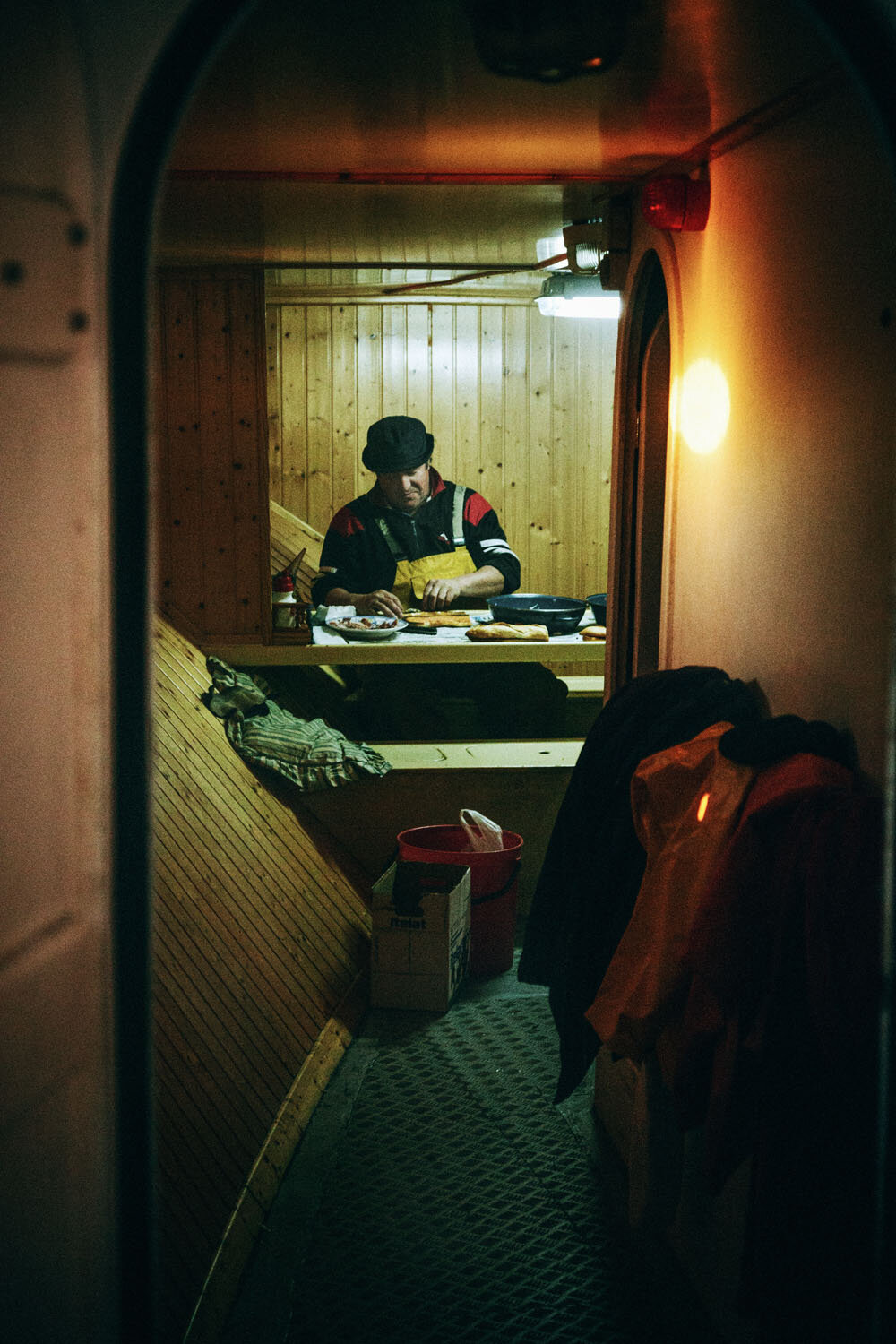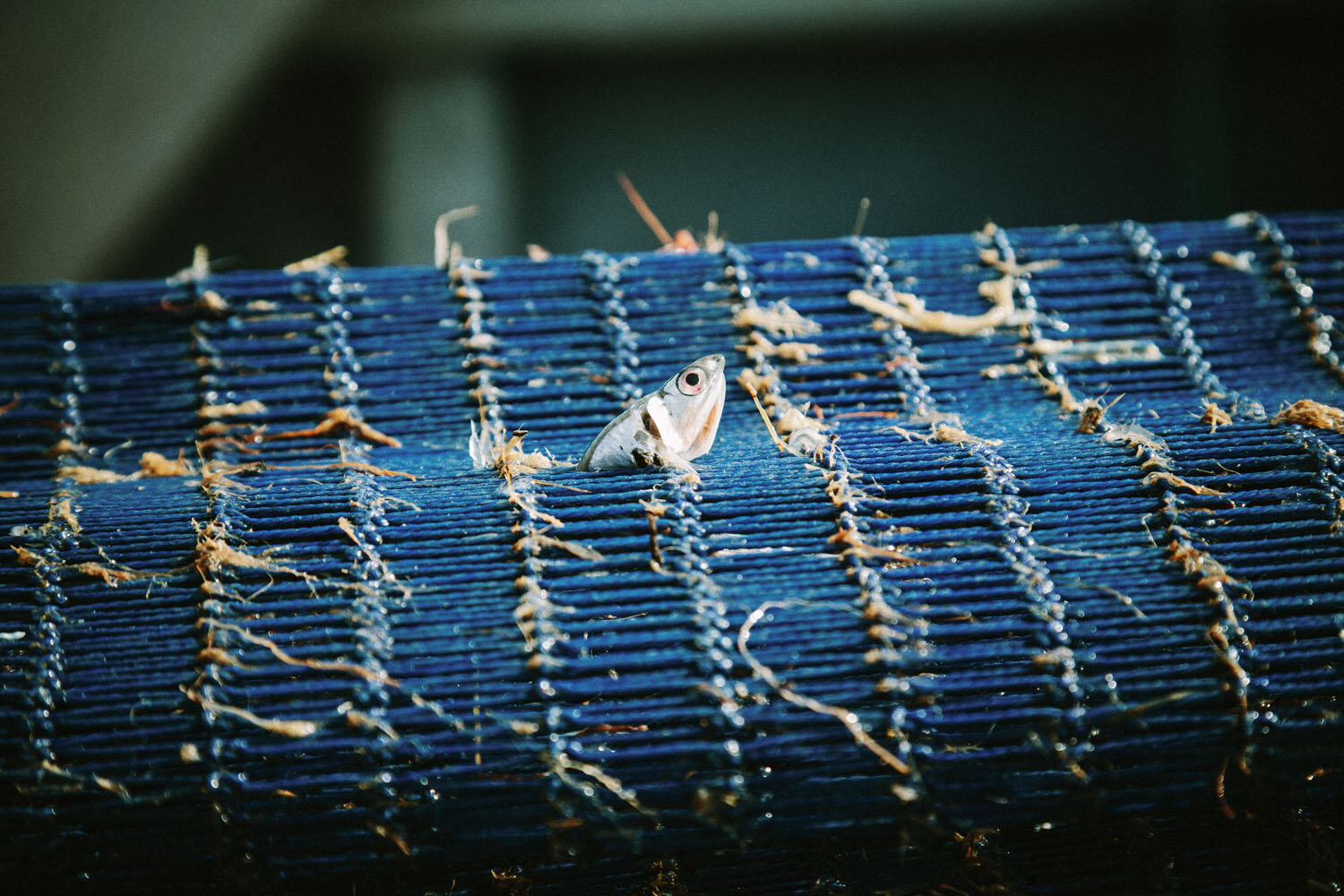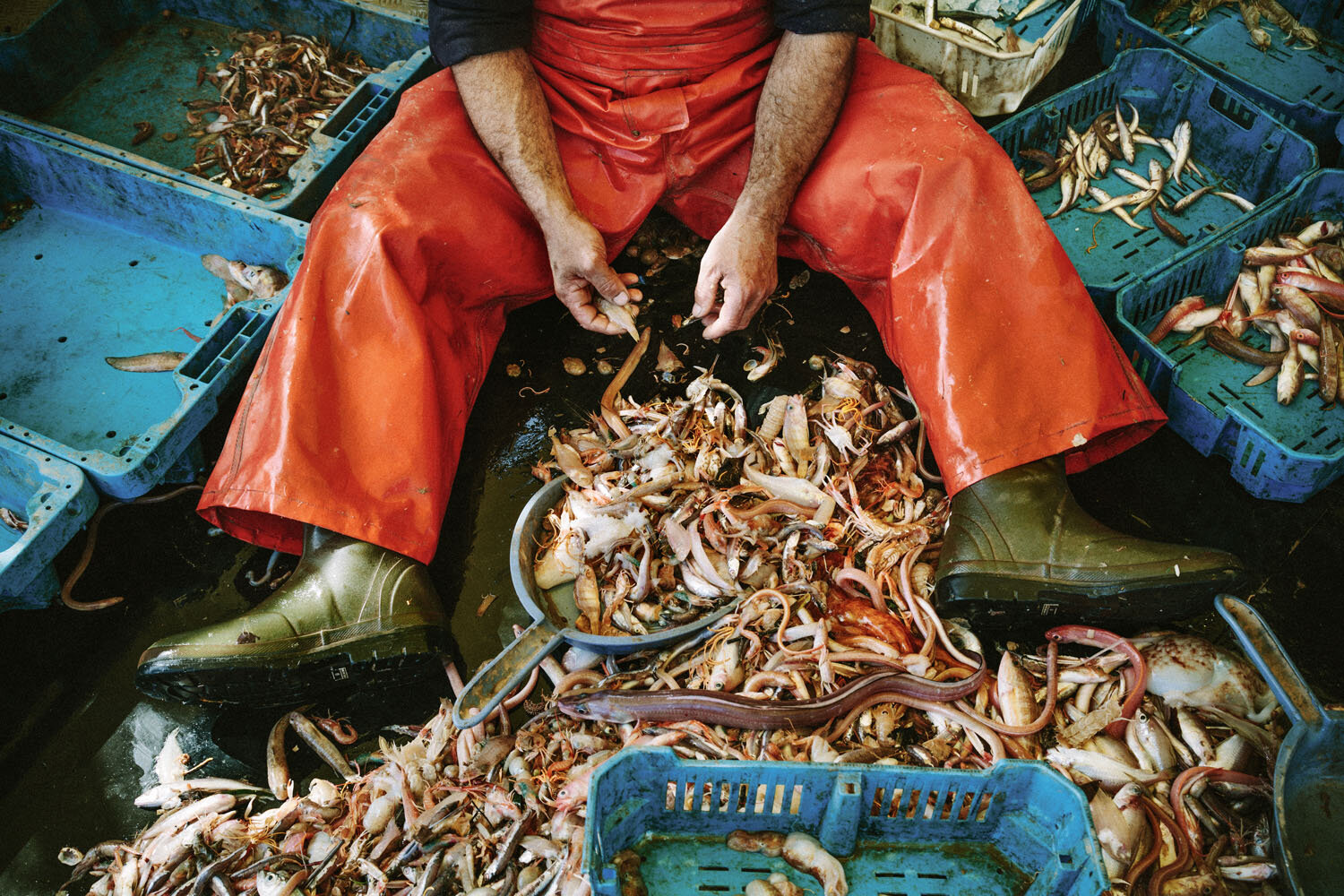
AL ARRASTRE
The trawling fishing method continues to be widespread in many ports due to its efficiency and speed when catching fish. However, it is a highly destructive practice, causing significant harm to the seabed and its ecosystem. Consequently, its legality is increasingly being called into question.
Vessels typically depart from the port at 5am heading out to sea until they get to the spot where they drop their nets. The Captain, who studies the charts and seabed to find where there will be the most abundant catch, carefully plans each journey in advance.
The net sinks to the seabed and is dragged for about three hours, scraping everything in its path. It is kept open by two large metal "doors" attached to the boat, allowing it to collect all marine life in its trajectory. During the peak season, up to four trawling sessions can be conducted daily.
While the net operates, the crew uses the time to rest, eat, or perform other duties onboard. Once the catch is brought onboard, the fish are sorted while the net is prepared for another trawl.
The job can become particularly challenging during heavy storms, as the ship's movements, caused by strong waves, make operations more dangerous and demanding.
The day concludes with the tally of the catch, which is then taken to markets for sale.





























